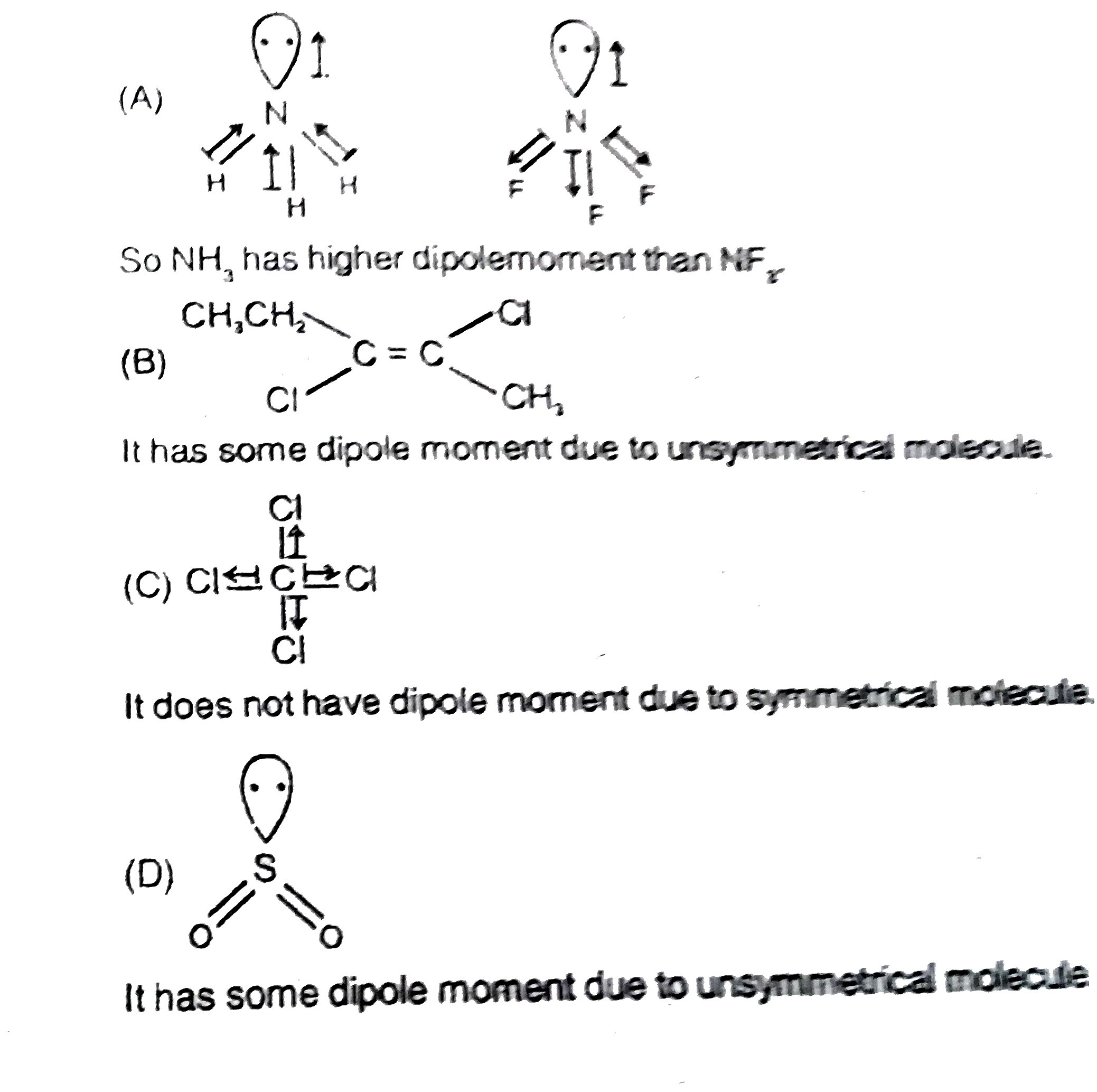Between ionic and covalent bonds, there are large majority of bonds, in which the bonding electrons are shared unequally between two atoms but are not completely transferred.Such bonds are said to be polar covalent bonds and the bond polarity is due to difference in electronegativity, the ability of an atom in a molecule to attract the shared electrons in a covalent bond.
The measure of net polarity is a quantity called the dipole moment, , which is defined as the magnitude of the charge Q at either end of the molecular dipole times the distance r between the charges : .Molecular polarities give rise to some of the forces that occur between molecules and these forces are of several different types including dipole-dipole forces, London dispersion forces, and hydrogen bonds. All these intermolecular forces are electrical in origin and result from the mutual attraction of unlike charges or the mutual repulsion of like charges.
Which of the following statement is true ?
A
The dipole moment of is more than
B
trans-2,3-dichloro-2-pentene does not have net permanent dipole moment
C
Carbon tetrachloride has no net dipole moment because of its regular tetrahedral structure
D
Dipole moment is zero for sulphurdioxide molecule.
Text Solution
The correct Answer is:C
|
Topper's Solved these Questions
Similar Questions
Knowledge Check
Between ionic and covalent bonds, there are large majority of bonds, in which the bonding electrons are shared unequally between two atoms but are not completely transferred.Such bonds are said to be polar covalent bonds and the bond polarity is due to difference in electronegativity, the ability of an atom in a molecule to attract the shared electrons in a covalent bond.
The measure of net polarity is a quantity called the dipole moment, μ , which is defined as the magnitude of the charge Q at either end of the molecular dipole times the distance r between the charges : μ=Q×r.Molecular polarities give rise to some of the forces that occur between molecules and these forces are of several different types including dipole-dipole forces, London dispersion forces, and hydrogen bonds. All these intermolecular forces are electrical in origin and result from the mutual attraction of unlike charges or the mutual repulsion of like charges.
In which of the following mixtures, the London dispersion force acts as a major intermolecular force of attraction ?ASodium chloride and waterBCyclohexane and carbontetrachlorideCWater and ethyl alcoholDBenzene and acetoneThe electrons in a non-polar covalent bond are
AgainedBlostCshared equallyDshared unequallyCovalent bond is formed between the atoms of
AmetalsBnon-metalsCmetals and non-metalsDmetals and metalloids.
If the electron pair is unequally shared between the bonded atoms, it results in ______ bond.
View SolutionOne pair of shared electrons constitutes ………………. Covalent bond.
View SolutionGive the appropriate term defined by the statements given below :
The covalent bond in which the electrons are shared equally between the combining atoms.
View SolutionCovalent bond is formed by transfer of electrons.
View SolutionMaximum number of covalent bonds between two atoms is
View Solution

